-
EXECUTIVE SUMMARY
-
MARKET INTRODUCTION
-
2.1.
-
Definition
-
Scope of the Study
- Research Objective
- Limitations
-
2.2.2.
-
Assumptions
-
RESEARCH METHODOLOGY
-
Overview
-
Data Mining
-
Secondary Research
-
Primary Research
- Breakdown of Primary
-
3.4.1.
-
Primary Interviews and Information Gathering Process
-
Respondents
-
Forecasting Model
-
Market Size Estimation
- Top-Down Approach
-
3.6.1.
-
Bottom-Up Approach
-
Data Triangulation
-
Validation
-
MARKET DYNAMICS
-
Overview
-
Drivers
-
Restraints
-
Opportunities
-
MARKET FACTOR ANALYSIS
-
5.1.
-
Value Chain Analysis
-
Porter’s Five Forces Analysis
- Bargaining
- Bargaining Power of Buyers
- Threat of
- Threat of Substitutes
- Intensity of Rivalry
-
Power of Suppliers
-
New Entrants
-
COVID-19 Impact Analysis
- Market Impact Analysis
- Opportunity and Threat Analysis
-
5.3.2.
-
Regional Impact
-
GLOBAL HEAD
-
MOUNTED DISPLAY MARKET, BY TECHNOLOGY
-
Overview
-
Augmented Reality
-
Virtual Reality
-
GLOBAL HEAD MOUNTED DISPLAY MARKET, BY END-USE
-
Overview
-
Consumer
-
Commercial
-
Enterprise and
-
Industry
-
Engineering and Design
-
Military
-
Defense
-
Aerospace
-
Medical
-
Education
-
Sports
-
7.12.
-
Fashion
-
Journalism
-
GLOBAL HEAD MOUNTED DISPLAY MARKET, BY PRODUCT
-
TYPE
-
Overview
-
Head Mounted
-
Eyewear
-
GLOBAL
-
HEAD MOUNTED DISPLAY MARKET, BY COMPONENT
-
Overview
-
Processor
-
and Memory
-
Controller
-
Sensor
-
Camera
-
Display
-
Lens
-
Case and Connector
-
Goggles
-
Head Tracker
-
Computing
-
Battery
-
Pico Projectors Technology
-
9.14.
-
Accessories
-
GLOBAL HEAD MOUNTED DISPLAY MARKET, BY CONNECTIVITY
-
10.1.
-
Overview
-
Wired
-
Wireless
-
GLOBAL HEAD MOUNTED DISPLAY
-
MARKET, BY APPLICATION
-
Overview
-
Security
-
Training
-
and Simulation
-
Tracking
-
Imaging
-
GLOBAL HEAD MOUNTED
-
DISPLAY MARKET, BY TYPE
-
Discrete
-
Slide-On
-
Integrated
-
GLOBAL HEAD MOUNTED DISPLAY MARKET, BY REGION
-
Overview
- U.S.
- Canada
-
13.2.
-
North America
-
Europe
- France
- U.K
- Italy
- Spain
- Rest of Europe
-
13.3.1.
-
Germany
-
Asia-Pacific
- China
- Japan
- South Korea
- Australia
-
13.4.2.
-
India
-
13.4.6.
-
Rest of Asia-Pacific
-
Rest of the World
- Middle East
- Latin America
-
13.5.2.
-
Africa
-
COMPETITIVE LANDSCAPE
-
Overview
-
Competitive Analysis
-
Market Share Analysis
-
Major
-
Growth Strategy in the Global Head Mounted Display Market,
-
Competitive
-
Benchmarking
-
Leading Players in Terms of Number of Developments in the
-
Global Head Mounted Display Market,
-
Key developments and Growth Strategies
- New Technology Launch/End-Use Deployment
- Merger & Acquisitions
- Joint Ventures
-
Major Players Financial Matrix
- Major Players R&D Expenditure.
-
14.8.1.
-
Sales & Operating Income, 2022
-
COMPANY PROFILES
-
ALPHABET INC.
- Company Overview
- Financial Overview
- Technologys Offered
- Key Developments
- SWOT Analysis
- Key Strategies
-
Sony Corporation
- Company Overview
- Financial Overview
- Technologys
- Key Developments
- SWOT Analysis
- Key
-
Offered
-
Strategies
-
SAMSUNG
- Company Overview
- Financial
- Technologys Offered
- Key Developments
- Key Strategies
-
Overview
-
15.3.5.
-
SWOT Analysis
-
Microsoft Corporation
- Financial Overview
- Technologys Offered
- Key Developments
- SWOT Analysis
- Key Strategies
-
15.4.1.
-
Company Overview
-
BAE Systems
- Company Overview
- Financial Overview
- Technologys Offered
- Key Developments
- SWOT Analysis
- Key Strategies
-
ELBIT SYSTEMS LTD.
- Company Overview
- Financial Overview
- Technologys Offered
- Key Developments
- SWOT Analysis
- Key Strategies
-
FUJITSU
- Financial Overview
- Technologys Offered
- Key Developments
- SWOT Analysis
- Key Strategies
-
15.7.1.
-
Company Overview
-
HTC Corporation
- Company Overview
- Financial Overview
- Technologys Offered
- Key Developments
- SWOT Analysis
- Key Strategies
-
Huawei Technologies Co. Ltd
- Company
- Financial Overview
- Technologys Offered
- SWOT Analysis
- Key Strategies
-
Overview
-
15.9.4.
-
Key Developments
-
16.
-
APPENDIX
-
References
-
Related Reports
-
-
LIST
-
OF TABLES
-
GLOBAL HEAD MOUNTED DISPLAY MARKET, SYNOPSIS, 2018-2032
-
GLOBAL HEAD MOUNTED DISPLAY MARKET, ESTIMATES & FORECAST, 2018-2032
-
(USD BILLION)
-
GLOBAL HEAD MOUNTED DISPLAY MARKET, BY TECHNOLOGY, 2018-2032
-
(USD BILLION)
-
GLOBAL HEAD MOUNTED DISPLAY MARKET, BY END-USE, 2018-2032
-
(USD BILLION)
-
GLOBAL HEAD MOUNTED DISPLAY MARKET, BY PRODUCT TYPE,
-
GLOBAL HEAD MOUNTED DISPLAY MARKET, BY COMPONENT,
-
GLOBAL HEAD MOUNTED DISPLAY MARKET, BY CONNECTIVITY,
-
GLOBAL HEAD MOUNTED DISPLAY MARKET, BY APPLICATION,
-
GLOBAL HEAD MOUNTED DISPLAY MARKET, BY TYPE,
-
NORTH AMERICA HEAD MOUNTED DISPLAY MARKET,
-
BY TECHNOLOGY, 2018-2032 (USD BILLION)
-
NORTH AMERICA HEAD MOUNTED
-
DISPLAY MARKET, BY END-USE, 2018-2032 (USD BILLION)
-
NORTH AMERICA
-
HEAD MOUNTED DISPLAY MARKET, BY PRODUCT TYPE, 2018-2032 (USD BILLION)
-
TABLE
-
NORTH AMERICA HEAD MOUNTED DISPLAY MARKET, BY COMPONENT, 2018-2032 (USD BILLION)
-
NORTH AMERICA HEAD MOUNTED DISPLAY MARKET, BY CONNECTIVITY, 2018-2032
-
(USD BILLION)
-
NORTH AMERICA HEAD MOUNTED DISPLAY MARKET, BY COUNTRY,
-
NORTH AMERICA HEAD MOUNTED DISPLAY MARKET,
-
BY APPLICATION, 2018-2032 (USD BILLION)
-
NORTH AMERICA HEAD MOUNTED
-
DISPLAY MARKET, BY TYPE, 2018-2032 (USD BILLION)
-
U.S. HEAD MOUNTED
-
DISPLAY MARKET, BY TECHNOLOGY, 2018-2032 (USD BILLION)
-
U.S. HEAD MOUNTED
-
DISPLAY MARKET, BY END-USE, 2018-2032 (USD BILLION)
-
U.S. HEAD MOUNTED
-
DISPLAY MARKET, BY PRODUCT TYPE, 2018-2032 (USD BILLION)
-
U.S. HEAD
-
MOUNTED DISPLAY MARKET, BY COMPONENT, 2018-2032 (USD BILLION)
-
U.S.
-
HEAD MOUNTED DISPLAY MARKET, BY CONNECTIVITY, 2018-2032 (USD BILLION)
-
TABLE
-
U.S. HEAD MOUNTED DISPLAY MARKET, BY APPLICATION, 2018-2032 (USD BILLION)
-
U.S. HEAD MOUNTED DISPLAY MARKET, BY TYPE, 2018-2032 (USD BILLION)
-
CANADA HEAD MOUNTED DISPLAY MARKET, BY TECHNOLOGY, 2018-2032 (USD BILLION)
-
CANADA HEAD MOUNTED DISPLAY MARKET, BY END-USE, 2018-2032 (USD BILLION)
-
CANADA HEAD MOUNTED DISPLAY MARKET, BY PRODUCT TYPE, 2018-2032 (USD BILLION)
-
CANADA HEAD MOUNTED DISPLAY MARKET, BY COMPONENT, 2018-2032 (USD BILLION)
-
CANADA HEAD MOUNTED DISPLAY MARKET, BY CONNECTIVITY, 2018-2032 (USD BILLION)
-
CANADA HEAD MOUNTED DISPLAY MARKET, BY APPLICATION, 2018-2032 (USD BILLION)
-
CANADA HEAD MOUNTED DISPLAY MARKET, BY TYPE, 2018-2032 (USD BILLION)
-
EUROPE HEAD MOUNTED DISPLAY MARKET, BY TECHNOLOGY, 2018-2032 (USD BILLION)
-
EUROPE HEAD MOUNTED DISPLAY MARKET, BY END-USE, 2018-2032 (USD BILLION)
-
EUROPE HEAD MOUNTED DISPLAY MARKET, BY PRODUCT TYPE, 2018-2032 (USD BILLION)
-
EUROPE HEAD MOUNTED DISPLAY MARKET, BY COMPONENT, 2018-2032 (USD BILLION)
-
EUROPE HEAD MOUNTED DISPLAY MARKET, BY CONNECTIVITY, 2018-2032 (USD BILLION)
-
EUROPE HEAD MOUNTED DISPLAY MARKET, BY COUNTRY, 2018-2032 (USD BILLION)
-
EUROPE HEAD MOUNTED DISPLAY MARKET, BY APPLICATION, 2018-2032 (USD
-
EUROPE HEAD MOUNTED DISPLAY MARKET, BY TYPE, 2018-2032 (USD BILLION)
-
GERMANY HEAD MOUNTED DISPLAY MARKET, BY TECHNOLOGY, 2018-2032 (USD BILLION)
-
GERMANY HEAD MOUNTED DISPLAY MARKET, BY END-USE, 2018-2032 (USD BILLION)
-
GERMANY HEAD MOUNTED DISPLAY MARKET, BY PRODUCT TYPE, 2018-2032 (USD
-
BILLION)
-
GERMANY HEAD MOUNTED DISPLAY MARKET, BY COMPONENT, 2018-2032
-
(USD BILLION)
-
GERMANY HEAD MOUNTED DISPLAY MARKET, BY CONNECTIVITY,
-
GERMANY HEAD MOUNTED DISPLAY MARKET, BY APPLICATION,
-
GERMANY HEAD MOUNTED DISPLAY MARKET, BY TYPE, 2018-2032
-
(USD BILLION)
-
FRANCE HEAD MOUNTED DISPLAY MARKET, BY TECHNOLOGY, 2018-2032
-
(USD BILLION)
-
FRANCE HEAD MOUNTED DISPLAY MARKET, BY END-USE, 2018-2032
-
(USD BILLION)
-
FRANCE HEAD MOUNTED DISPLAY MARKET, BY PRODUCT TYPE,
-
FRANCE HEAD MOUNTED DISPLAY MARKET, BY COMPONENT,
-
FRANCE HEAD MOUNTED DISPLAY MARKET, BY CONNECTIVITY,
-
FRANCE HEAD MOUNTED DISPLAY MARKET, BY APPLICATION,
-
FRANCE HEAD MOUNTED DISPLAY MARKET, BY TYPE, 2018-2032
-
(USD BILLION)
-
U.K HEAD MOUNTED DISPLAY MARKET, BY TECHNOLOGY, 2018-2032
-
(USD BILLION)
-
U.K HEAD MOUNTED DISPLAY MARKET, BY END-USE, 2018-2032
-
(USD BILLION)
-
U.K HEAD MOUNTED DISPLAY MARKET, BY PRODUCT TYPE, 2018-2032
-
(USD BILLION)
-
U.K HEAD MOUNTED DISPLAY MARKET, BY COMPONENT, 2018-2032
-
(USD BILLION)
-
U.K HEAD MOUNTED DISPLAY MARKET, BY CONNECTIVITY, 2018-2032
-
(USD BILLION)
-
U.K HEAD MOUNTED DISPLAY MARKET, BY APPLICATION, 2018-2032
-
(USD
-
U.K HEAD MOUNTED DISPLAY MARKET, BY TYPE, 2018-2032 (USD BILLION)
-
ITALY HEAD MOUNTED DISPLAY MARKET, BY TECHNOLOGY, 2018-2032 (USD BILLION)
-
ITALY HEAD MOUNTED DISPLAY MARKET, BY END-USE, 2018-2032 (USD BILLION)
-
ITALY HEAD MOUNTED DISPLAY MARKET, BY PRODUCT TYPE, 2018-2032 (USD BILLION)
-
ITALY HEAD MOUNTED DISPLAY MARKET, BY COMPONENT, 2018-2032 (USD BILLION)
-
ITALY HEAD MOUNTED DISPLAY MARKET, BY CONNECTIVITY, 2018-2032 (USD BILLION)
-
ITALY HEAD MOUNTED DISPLAY MARKET, BY APPLICATION, 2018-2032 (USD
-
ITALY HEAD MOUNTED DISPLAY MARKET, BY TYPE, 2018-2032 (USD BILLION)
-
SPAIN HEAD MOUNTED DISPLAY MARKET, BY TECHNOLOGY, 2018-2032 (USD BILLION)
-
SPAIN HEAD MOUNTED DISPLAY MARKET, BY END-USE, 2018-2032 (USD BILLION)
-
SPAIN HEAD MOUNTED DISPLAY MARKET, BY PRODUCT TYPE, 2018-2032 (USD BILLION)
-
SPAIN HEAD MOUNTED DISPLAY MARKET, BY COMPONENT, 2018-2032 (USD BILLION)
-
SPAIN HEAD MOUNTED DISPLAY MARKET, BY CONNECTIVITY, 2018-2032 (USD BILLION)
-
SPAIN HEAD MOUNTED DISPLAY MARKET, BY APPLICATION, 2018-2032 (USD
-
SPAIN HEAD MOUNTED DISPLAY MARKET, BY TYPE, 2018-2032 (USD BILLION)
-
REST OF EUROPE HEAD MOUNTED DISPLAY MARKET, BY TECHNOLOGY, 2018-2032
-
(USD BILLION)
-
REST OF EUROPE HEAD MOUNTED DISPLAY MARKET, BY END-USE,
-
REST OF EUROPE HEAD MOUNTED DISPLAY MARKET,
-
BY PRODUCT TYPE, 2018-2032 (USD BILLION)
-
REST OF EUROPE HEAD MOUNTED
-
DISPLAY MARKET, BY COMPONENT, 2018-2032 (USD BILLION)
-
REST OF EUROPE
-
HEAD MOUNTED DISPLAY MARKET, BY CONNECTIVITY, 2018-2032 (USD BILLION)
-
TABLE
-
REST OF EUROPE HEAD MOUNTED DISPLAY MARKET, BY APPLICATION, 2018-2032 (USD
-
REST OF EUROPE HEAD MOUNTED DISPLAY MARKET, BY TYPE, 2018-2032 (USD BILLION)
-
ASIA PACIFIC HEAD MOUNTED DISPLAY MARKET, BY TECHNOLOGY, 2018-2032 (USD
-
BILLION)
-
ASIA PACIFIC HEAD MOUNTED DISPLAY MARKET, BY END-USE, 2018-2032
-
(USD BILLION)
-
ASIA PACIFIC HEAD MOUNTED DISPLAY MARKET, BY PRODUCT
-
TYPE, 2018-2032 (USD BILLION)
-
ASIA PACIFIC HEAD MOUNTED DISPLAY MARKET,
-
BY COMPONENT, 2018-2032 (USD BILLION)
-
ASIA PACIFIC HEAD MOUNTED DISPLAY
-
MARKET, BY CONNECTIVITY, 2018-2032 (USD BILLION)
-
ASIA PACIFIC HEAD
-
MOUNTED DISPLAY MARKET, BY COUNTRY, 2018-2032 (USD BILLION)
-
ASIA PACIFIC
-
HEAD MOUNTED DISPLAY MARKET, BY APPLICATION, 2018-2032 (USD
-
ASIA
-
PACIFIC HEAD MOUNTED DISPLAY MARKET, BY TYPE, 2018-2032 (USD BILLION)
-
TABLE
-
CHINA HEAD MOUNTED DISPLAY MARKET, BY TECHNOLOGY, 2018-2032 (USD BILLION)
-
CHINA HEAD MOUNTED DISPLAY MARKET, BY END-USE, 2018-2032 (USD BILLION)
-
CHINA HEAD MOUNTED DISPLAY MARKET, BY PRODUCT TYPE, 2018-2032 (USD BILLION)
-
CHINA HEAD MOUNTED DISPLAY MARKET, BY COMPONENT, 2018-2032 (USD BILLION)
-
CHINA HEAD MOUNTED DISPLAY MARKET, BY CONNECTIVITY, 2018-2032 (USD BILLION)
-
CHINA HEAD MOUNTED DISPLAY MARKET, BY APPLICATION, 2018-2032 (USD
-
CHINA HEAD MOUNTED DISPLAY MARKET, BY TYPE, 2018-2032 (USD BILLION)
-
JAPAN HEAD MOUNTED DISPLAY MARKET, BY TECHNOLOGY, 2018-2032 (USD BILLION)
-
JAPAN HEAD MOUNTED DISPLAY MARKET, BY END-USE, 2018-2032 (USD BILLION)
-
JAPAN HEAD MOUNTED DISPLAY MARKET, BY PRODUCT TYPE, 2018-2032 (USD BILLION)
-
JAPAN HEAD MOUNTED DISPLAY MARKET, BY COMPONENT, 2018-2032 (USD BILLION)
-
JAPAN HEAD MOUNTED DISPLAY MARKET, BY CONNECTIVITY, 2018-2032 (USD BILLION)
-
JAPAN HEAD MOUNTED DISPLAY MARKET, BY APPLICATION, 2018-2032 (USD
-
JAPAN HEAD MOUNTED DISPLAY MARKET, BY TYPE, 2018-2032 (USD BILLION)
-
INDIA HEAD MOUNTED DISPLAY MARKET, BY TECHNOLOGY, 2018-2032 (USD BILLION)
-
INDIA HEAD MOUNTED DISPLAY MARKET, BY END-USE, 2018-2032 (USD BILLION)
-
INDIA HEAD MOUNTED DISPLAY MARKET, BY PRODUCT TYPE, 2018-2032 (USD BILLION)
-
INDIA HEAD MOUNTED DISPLAY MARKET, BY COMPONENT, 2018-2032 (USD BILLION)
-
INDIA HEAD MOUNTED DISPLAY MARKET, BY CONNECTIVITY, 2018-2032 (USD BILLION)
-
INDIA HEAD MOUNTED DISPLAY MARKET, BY APPLICATION, 2018-2032 (USD
-
INDIA HEAD MOUNTED DISPLAY MARKET, BY TYPE, 2018-2032 (USD BILLION)
-
SOUTH KOREA HEAD MOUNTED DISPLAY MARKET, BY TECHNOLOGY, 2018-2032 (USD
-
BILLION)
-
SOUTH KOREA HEAD MOUNTED DISPLAY MARKET, BY END-USE, 2018-2032
-
(USD BILLION)
-
SOUTH KOREA HEAD MOUNTED DISPLAY MARKET, BY PRODUCT
-
TYPE, 2018-2032 (USD BILLION)
-
SOUTH KOREA HEAD MOUNTED DISPLAY MARKET,
-
BY COMPONENT, 2018-2032 (USD BILLION)
-
SOUTH KOREA HEAD MOUNTED DISPLAY
-
MARKET, BY CONNECTIVITY, 2018-2032 (USD BILLION)
-
SOUTH KOREA HEAD
-
MOUNTED DISPLAY MARKET, BY APPLICATION, 2018-2032 (USD
-
SOUTH KOREA
-
HEAD MOUNTED DISPLAY MARKET, BY TYPE, 2018-2032 (USD BILLION)
-
AUSTRALIA
-
HEAD MOUNTED DISPLAY MARKET, BY TECHNOLOGY, 2018-2032 (USD BILLION)
-
TABLE 119
-
AUSTRALIA HEAD MOUNTED DISPLAY MARKET, BY END-USE, 2018-2032 (USD BILLION)
-
TABLE
-
AUSTRALIA HEAD MOUNTED DISPLAY MARKET, BY PRODUCT TYPE, 2018-2032 (USD BILLION)
-
AUSTRALIA HEAD MOUNTED DISPLAY MARKET, BY COMPONENT, 2018-2032 (USD
-
BILLION)
-
AUSTRALIA HEAD MOUNTED DISPLAY MARKET, BY CONNECTIVITY,
-
AUSTRALIA HEAD MOUNTED DISPLAY MARKET, BY
-
APPLICATION, 2018-2032 (USD
-
AUSTRALIA HEAD MOUNTED DISPLAY MARKET,
-
BY TYPE, 2018-2032 (USD BILLION)
-
REST OF ASIA PACIFIC HEAD MOUNTED
-
DISPLAY MARKET, BY TECHNOLOGY, 2018-2032 (USD BILLION)
-
REST OF ASIA
-
PACIFIC HEAD MOUNTED DISPLAY MARKET, BY END-USE, 2018-2032 (USD BILLION)
-
TABLE
-
REST OF ASIA PACIFIC HEAD MOUNTED DISPLAY MARKET, BY PRODUCT TYPE, 2018-2032
-
(USD BILLION)
-
REST OF ASIA PACIFIC HEAD MOUNTED DISPLAY MARKET, BY
-
COMPONENT, 2018-2032 (USD BILLION)
-
REST OF ASIA PACIFIC HEAD MOUNTED
-
DISPLAY MARKET, BY CONNECTIVITY, 2018-2032 (USD BILLION)
-
REST OF
-
ASIA PACIFIC HEAD MOUNTED DISPLAY MARKET, BY APPLICATION, 2018-2032 (USD
-
TABLE
-
REST OF ASIA PACIFIC HEAD MOUNTED DISPLAY MARKET, BY TYPE, 2018-2032 (USD BILLION)
-
REST OF THE WORLD HEAD MOUNTED DISPLAY MARKET, BY TECHNOLOGY, 2018-2032
-
(USD BILLION)
-
REST OF THE WORLD HEAD MOUNTED DISPLAY MARKET, BY END-USE,
-
REST OF THE WORLD HEAD MOUNTED DISPLAY MARKET,
-
BY PRODUCT TYPE, 2018-2032 (USD BILLION)
-
REST OF THE WORLD HEAD MOUNTED
-
DISPLAY MARKET, BY COMPONENT, 2018-2032 (USD BILLION)
-
REST OF THE
-
WORLD HEAD MOUNTED DISPLAY MARKET, BY CONNECTIVITY, 2018-2032 (USD BILLION)
-
TABLE
-
REST OF THE WORLD HEAD MOUNTED DISPLAY MARKET, BY COUNTRY, 2018-2032 (USD BILLION)
-
REST OF WORLD HEAD MOUNTED DISPLAY MARKET, BY APPLICATION, 2018-2032
-
(USD
-
REST OF WORLD HEAD MOUNTED DISPLAY MARKET, BY TYPE, 2018-2032
-
(USD BILLION)
-
MIDDLE EAST HEAD MOUNTED DISPLAY MARKET, BY TECHNOLOGY,
-
MIDDLE EAST HEAD MOUNTED DISPLAY MARKET,
-
BY END-USE, 2018-2032 (USD BILLION)
-
MIDDLE EAST HEAD MOUNTED DISPLAY
-
MARKET, BY PRODUCT TYPE, 2018-2032 (USD BILLION)
-
MIDDLE EAST HEAD
-
MOUNTED DISPLAY MARKET, BY COMPONENT, 2018-2032 (USD BILLION)
-
MIDDLE
-
EAST HEAD MOUNTED DISPLAY MARKET, BY CONNECTIVITY, 2018-2032 (USD BILLION)
-
TABLE
-
MIDDLE EAST HEAD MOUNTED DISPLAY MARKET, BY APPLICATION, 2018-2032 (USD
-
MIDDLE EAST HEAD MOUNTED DISPLAY MARKET, BY TYPE, 2018-2032 (USD BILLION)
-
AFRICA HEAD MOUNTED DISPLAY MARKET, BY TECHNOLOGY, 2018-2032 (USD BILLION)
-
AFRICA HEAD MOUNTED DISPLAY MARKET, BY END-USE, 2018-2032 (USD BILLION)
-
AFRICA HEAD MOUNTED DISPLAY MARKET, BY PRODUCT TYPE, 2018-2032 (USD
-
BILLION)
-
AFRICA HEAD MOUNTED DISPLAY MARKET, BY COMPONENT, 2018-2032
-
(USD BILLION)
-
AFRICA HEAD MOUNTED DISPLAY MARKET, BY CONNECTIVITY,
-
AFRICA HEAD MOUNTED DISPLAY MARKET, BY APPLICATION,
-
AFRICA HEAD MOUNTED DISPLAY MARKET, BY TYPE, 2018-2032
-
(USD BILLION)
-
LATIN AMERICA HEAD MOUNTED DISPLAY MARKET, BY TECHNOLOGY,
-
LATIN AMERICA HEAD MOUNTED DISPLAY MARKET,
-
BY END-USE, 2018-2032 (USD BILLION)
-
LATIN AMERICA HEAD MOUNTED DISPLAY
-
MARKET, BY PRODUCT TYPE, 2018-2032 (USD BILLION)
-
LATIN AMERICA HEAD
-
MOUNTED DISPLAY MARKET, BY COMPONENT, 2018-2032 (USD BILLION)
-
LATIN
-
AMERICA HEAD MOUNTED DISPLAY MARKET, BY CONNECTIVITY, 2018-2032 (USD BILLION)
-
LATIN AMERICA HEAD MOUNTED DISPLAY MARKET, BY APPLICATION, 2018-2032
-
(USD
-
LATIN AMERICA HEAD MOUNTED DISPLAY MARKET, BY TYPE, 2018-2032
-
(USD BILLION)
-
-
LIST OF FIGURES
-
RESEARCH PROCESS
-
MARKET STRUCTURE FOR THE GLOBAL HEAD MOUNTED DISPLAY MARKET
-
FIGURE
-
MARKET DYNAMICS FOR THE GLOBAL HEAD MOUNTED DISPLAY MARKET
-
GLOBAL
-
HEAD MOUNTED DISPLAY MARKET, SHARE (%), BY TECHNOLOGY, 2022
-
GLOBAL
-
HEAD MOUNTED DISPLAY MARKET, SHARE (%), BY END-USE, 2022
-
GLOBAL HEAD
-
MOUNTED DISPLAY MARKET, SHARE (%), BY PRODUCT TYPE, 2022
-
GLOBAL HEAD
-
MOUNTED DISPLAY MARKET, SHARE (%), BY COMPONENT, 2022
-
GLOBAL HEAD
-
MOUNTED DISPLAY MARKET, SHARE (%), BY CONNECTIVITY, 2022
-
GLOBAL HEAD
-
MOUNTED DISPLAY MARKET, SHARE (%), BY APPLICATION, 2022
-
GLOBAL HEAD
-
MOUNTED DISPLAY MARKET, SHARE (%), BY TYPE, 2022
-
GLOBAL HEAD MOUNTED
-
DISPLAY MARKET, SHARE (%), BY REGION, 2022
-
NORTH AMERICA: HEAD MOUNTED
-
DISPLAY MARKET, SHARE (%), BY REGION, 2022
-
EUROPE: HEAD MOUNTED
-
DISPLAY MARKET, SHARE (%), BY REGION, 2022
-
ASIA-PACIFIC: HEAD MOUNTED
-
DISPLAY MARKET, SHARE (%), BY REGION, 2022
-
REST OF THE WORLD: HEAD
-
MOUNTED DISPLAY MARKET, SHARE (%), BY REGION, 2022
-
GLOBAL HEAD MOUNTED
-
DISPLAY MARKET: COMPANY SHARE ANALYSIS, 2022 (%)
-
ALPHABET INC.: FINANCIAL
-
OVERVIEW SNAPSHOT
-
ALPHABET INC.: SWOT ANALYSIS
-
SONY
-
CORPORATION: FINANCIAL OVERVIEW SNAPSHOT
-
SONY CORPORATION: SWOT ANALYSIS
-
SAMSUNG: FINANCIAL OVERVIEW SNAPSHOT
-
SAMSUNG: SWOT ANALYSIS
-
MICROSOFT CORPORATION: FINANCIAL OVERVIEW SNAPSHOT
-
MICROSOFT
-
CORPORATION: SWOT ANALYSIS
-
BAE SYSTEMS.: FINANCIAL OVERVIEW SNAPSHOT
-
BAE SYSTEMS.: SWOT ANALYSIS
-
ELBIT SYSTEMS LTD.: FINANCIAL
-
OVERVIEW SNAPSHOT
-
ELBIT SYSTEMS LTD.: SWOT ANALYSIS
-
FIGURE
-
FUJITSU: FINANCIAL OVERVIEW SNAPSHOT
-
FUJITSU: SWOT ANALYSIS
-
HTC CORPORATION: FINANCIAL OVERVIEW SNAPSHOT
-
HTC CORPORATION:
-
SWOT ANALYSIS
-
HUAWEI TECHNOLOGIES CO. LTD: FINANCIAL OVERVIEW SNAPSHOT
-
HUAWEI TECHNOLOGIES CO. LTD: SWOT ANALYSIS
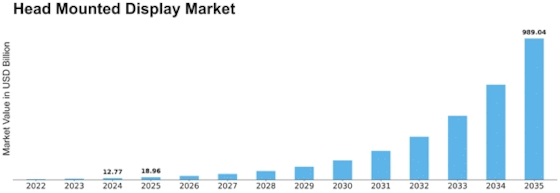
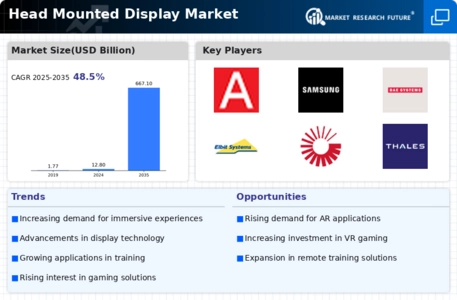


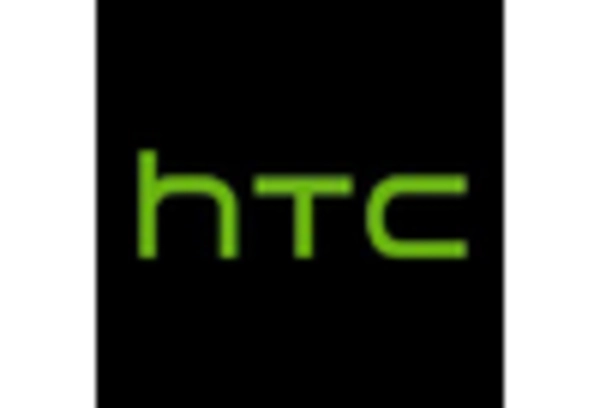
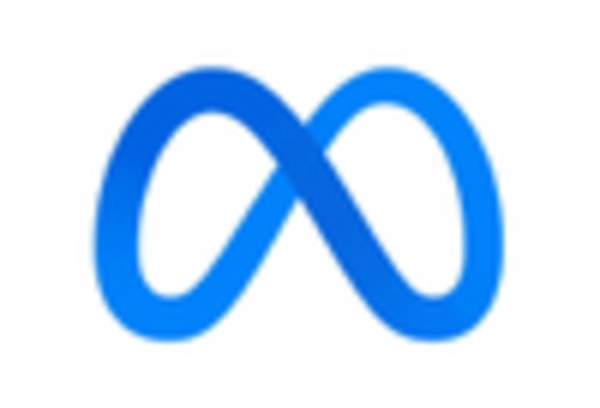


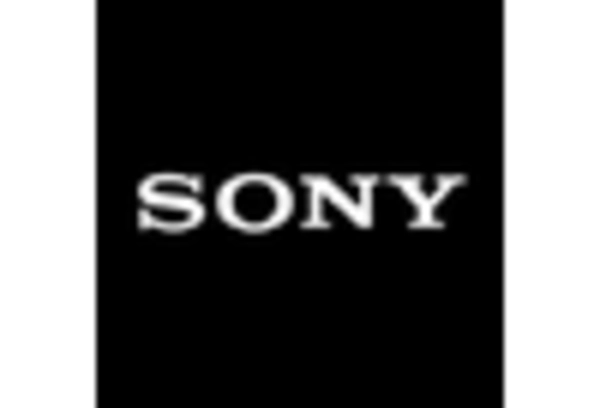

Leave a Comment